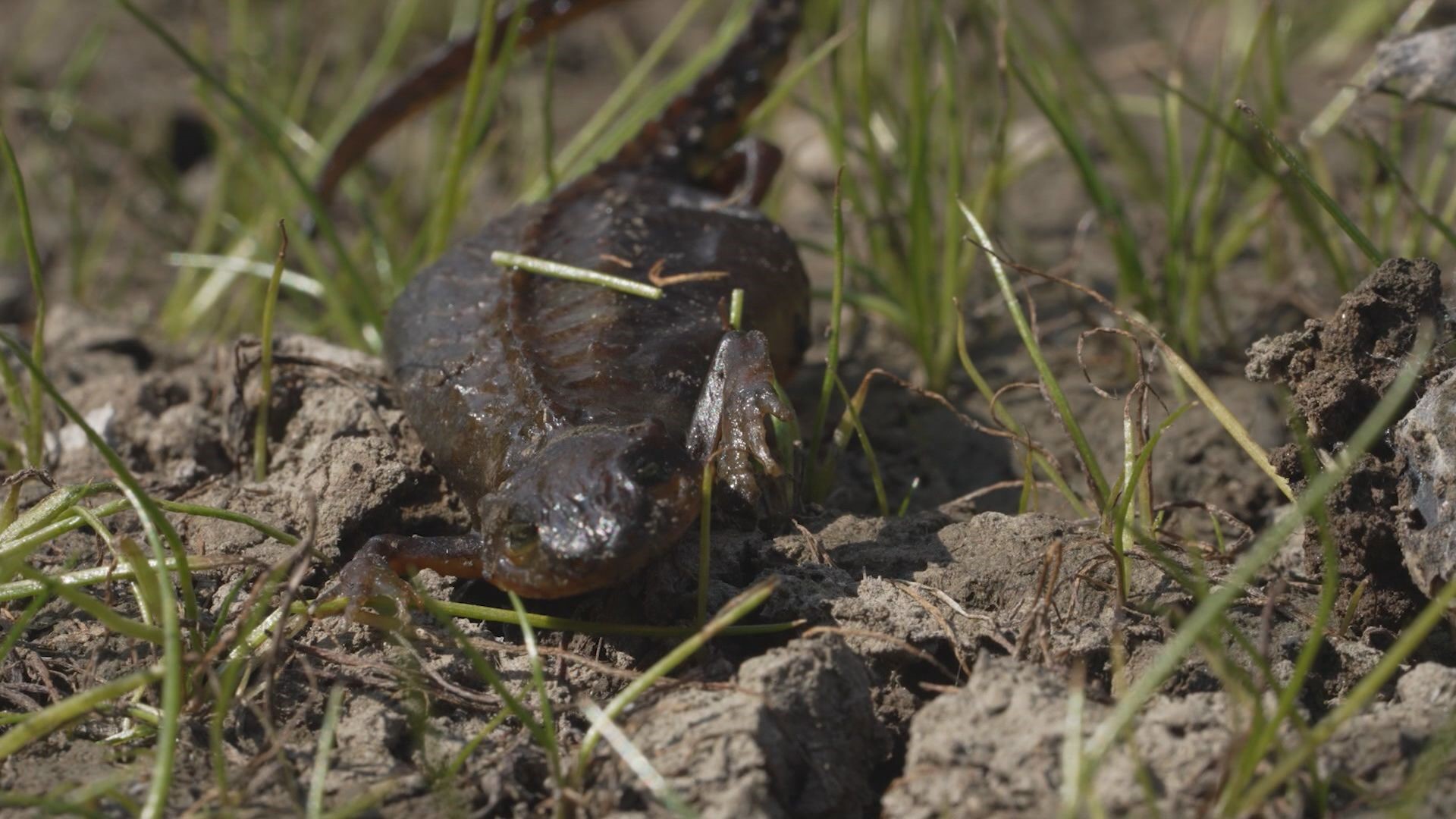WASHINGTON, USA — Washington Department of Fish and Wildlife (WDFW) researchers are studying what could be causing a large number of rough-skinned newts to die at an alpine lake in the southern Olympics.
Most of the recently passed newts appear emaciated and bloated. Some of the still-living newts have red markings that look like infections around their throats. There are many possibilities, and scientists hope what they find could lead to a broader understanding of any factors at play.
WDFW research scientist Dr. Max Lambert first noticed the problem while hiking at a remote lake in 2021, and since then has spoken with researchers in California noticing similar effects there. Lambert says he saw an unusual number of dead newts without clear evidence of reasons for their deaths. Since then, he and his colleagues have been hiking to the lake, searching for dead and live newts and taking samples to test for pathogens, bacteria and other observable factors. They have asked the lake's name not be released to prevent additional interference with the newts.
Rough-skinned newts are common, and the size of the mortality event is not expected to constitute a mass die-off or endanger the population as a whole, but it could be an indicator of what's happening in that area.
"There's a growing recognition in conservation to do what we call keeping common things common," Lambert said. "That's a big signal to us that when you have something that's relatively common and pervasive in our area, we don't expect them to be the ones we're seeing die off repeatedly. When you start seeing animals you think should be most resilient to whatever's happening in the world getting hit hard, that's a signal that maybe it's a bell-weather of something happening a little more broadly, going on in the environment that we should be tuned into."
The lake is located in a relatively low-traffic area of the Olympic National Forest. At the end of August when KING 5 hiked in with WDFW, it had receded significantly, leaving some of the dead newts lying in thick mud.
Lambert lifted one of the dead newts from the mud and said it looked a lot like the newts found in 2021 and 2022, though it was extraordinarily swollen.
"You can see it's very emaciated already, it's bloated here, probably been dead for a few days," Lambert said. "Its eyes are sunken so it's definitely been desiccating but its skin still looks pretty soft. Usually when they've been in the sun awhile the skin shrink-wraps to the bones."
Lambert says there are obviously normal causes of death for newts, including being eaten by predators, but the number of dead newts there that had not decayed- meaning they had died fairly recently -- was unusual. Because they are emaciated, it may seem like there was a lack of food available -- but substantial dragonflies and damselfly were available in the water as a food source. It's possible that a pathogen or bacteria was brought into the environment; Lambert says chytrid fungus, known for impacting some amphibian species, was ruled out as a reason last year.
"It could also be a pathogen that's been here for thousands of years and totally fine for all that timeframe, and then climate change has triggered it to become a little more prevalent or impactful to the animals," Lambert said.
At this point, he says, it's just too early to say what's happening.
Part of the process is swabbing the live newts and sending samples back to be tested. Lambert also takes samples of water temperature and pH. He says the observations they make could reveal more about the environment as a whole.
"If it's affecting these common things, it's probably also impacting the less common things as well," Lambert said. "So this is a nice signal for us to be able to be tuned into this part of the Southern Olympics, have a relatively abundant species to work with, and just get some information on disease, on climate change, on habitat change, things like that."
Lambert says resources within WDFW are limited, and the agency appreciates people reporting any suspicious deaths of animals. It helps them cover more ground across the state.
"There's a lot of value to the public, our volunteers, our community, just being aware of their surroundings and if something looks weird, let us know," Lambert said. "We have reporting on our website for things that look sick, that look dead, that look injured. We can pretty much get a good guess from a picture if you send it to us."

